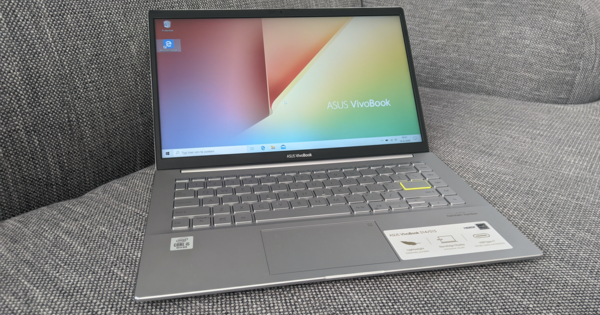A NAS is a handy device with which you can share files with the whole family. However, you are doing the NAS short if you only use it for that purpose. A NAS can store and share more than just files. What can you do with a NAS?
The first NAS devices were little more than a hard drive with a network connection. You could create and share folders and save files. This was useful at a time when everyone used a PC and broadband internet was limited. The world has now completely changed. Almost every house has a fixed internet connection and, in addition to the few wired PCs, many mobile devices are online via WiFi. Like a chameleon, the NAS has always adapted to this changing situation. Also read: The 8 best NAS systems you can buy right now.
You can still store files centrally, which is also important with the many mobile devices. But you can also do a lot of other, useful and fun things with a modern NAS. And it is not difficult, because although every NAS runs a version of Linux, a NAS is relatively easy to use thanks to its web interface. The PC as well as smartphone and tablet can also easily find the NAS via the supplied software and free apps.
01 Basic configuration
Although you can always adjust the configuration of the NAS, it is important to set the basics right. This especially applies to the layout of the storage space, because if you want to adjust it later, you will lose all data on the NAS. Once the hard drives have been installed and the NAS has electricity and a network connection, turn on the NAS. Look in the 'Quick Install Guide' on how to start the installation of your NAS. The most important things during the installation are downloading and installing the latest firmware on the NAS, setting a strong password for the administrator (admin), configuring a fixed IP address and the storage space. If there is more than one disk in the NAS, always choose RAID. RAID1 with two disks, RAID5 or 10 with more disks. Depending on the size of the storage space, it may take several hours to sync the storage space. It is not necessary to wait for that, but give the NAS sufficient time to properly set up this basis.
02 Users
A NAS is ideal for use in a family or small business. However, it is not useful when everyone uses the same account and it is also not wise to always use the admin account yourself. Therefore, create a separate account for all users, preferably with their own piece of private storage space and the option to share files with others or adjust shared functions.
You manage the NAS via the web interface. Therefore, start the browser and type the IP address of the NAS in the address bar. Login as admin with the strong password you set during installation. Then go to the main section of the NAS and select something like Users or access control (the exact name varies by manufacturer). click on New or Add to create a new user. In any case, do not make users other than yourself a member of the admin group and preferably create an account for yourself that is not an admin.
03 Folders and Share
Once the users have been created, at least the users can already save files to the NAS and share files with each other. Some NAS devices have a Public folder by default where anyone can drop and delete files, on other NAS devices this is not present. Most NAS devices have a file browser that allows you to view the folders and files on the NAS from the browser. Similar to Windows Explorer, but in the browser. Start the part File Station or click Shares.
click on New share or New map and create a folder Documents and give all users read and write permissions on it.
Users can now establish a wired network connection on any PC in Windows Explorer. To do this, right-click on the item This PC and choose the option Network connection. In the window that is now displayed, fill in the field folder, the following in: \IP address NAS\Documents. Tick the option Connect with other credentials and the first time you connect, enter the username and password of the user account on the NAS. This network connection is now permanently displayed in Windows Explorer and has its own drive letter.
Install packages
Commissioning a NAS is done in two steps. The first step is installing the operating system and configuring important things such as the network (always a fixed IP address) and storage space (JBOD, RAID). In the second step you add extra functionality by installing packages. You install the packages from the 'shop' of the NAS, as we also know from iOS and Android. At Synology this store is called Package Center, at QNAP App Center and NETGEAR just calls it apps. To download packages, you need to register your NAS, but the packages are usually free. Find the functionality you want to add and click to install.
04 Download
A NAS can download movies and music just fine. To do this, install one of the download packages from the app store of your NAS, for example Download Station, qbittorrent, Sick Beard and CouchPotato. There is plenty of choice. After that, launch the new feature and add a download task.
To do this, copy the url of the torrent or save the torrent file on the PC and then open it with the download function. Add the task and after a while the NAS will start downloading. You can now close the browser and turn off the PC, the download will continue to be handled by the NAS. You can easily add multiple downloads, the NAS takes care of it all. In addition to torrents, ftp and http downloads are also supported.
Alternative packages
If you are looking for a function that you cannot find among the packages, you can check whether a package is available from an alternative source. There are also extensions available outside the official app stores of the manufacturers. That certainly applies to QNAP and Synology, but sometimes also to other NAS operating systems.
For example, look at this or this site. On the latter you'll find a Spotweb client and a subtitle downloader, both nice extensions to the SABnzbd feature. Through Package Center / Manual Install you can download such an alternative package on the Synology. Well you have to go through Package Center / Settings the Confidence Level bring down to Any publisher. The latter makes it clear, there are also disadvantages and risks associated with the use of these packages. These packages have not been tested by the NAS manufacturer and can make the NAS unstable or insecure. If you use the NAS for backups, then that is certainly something to take into account.

